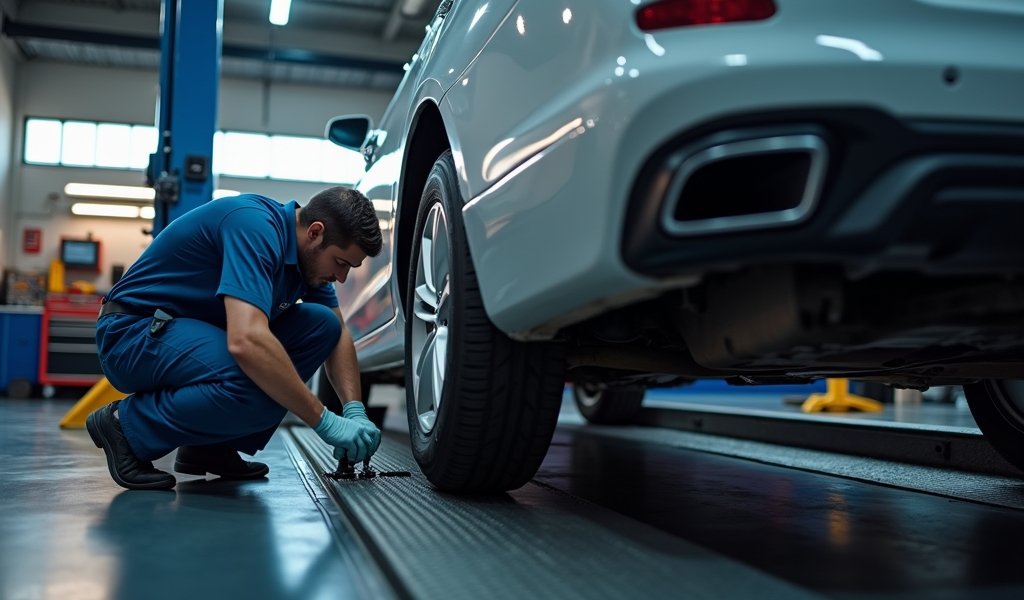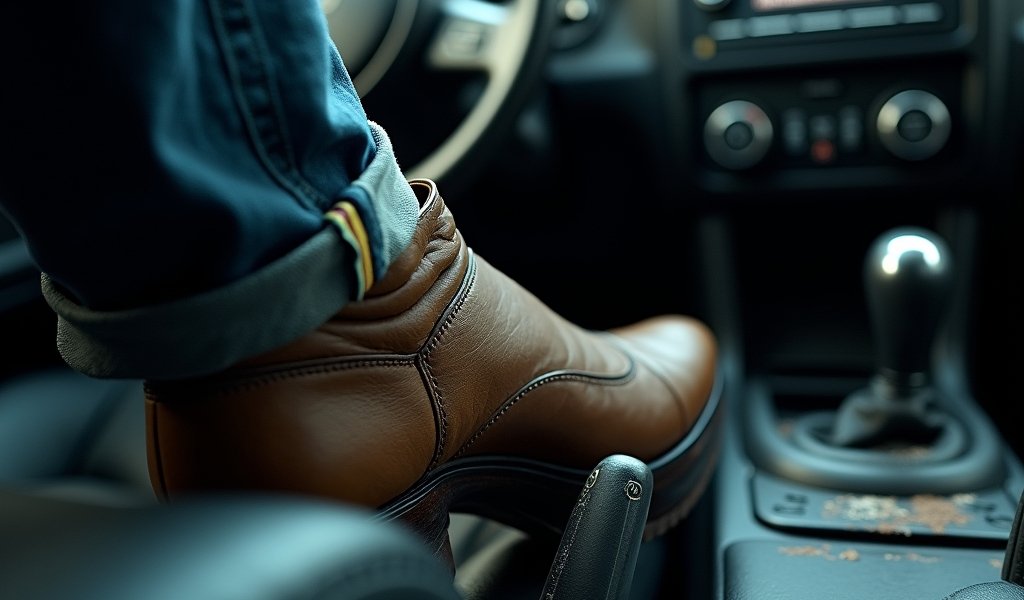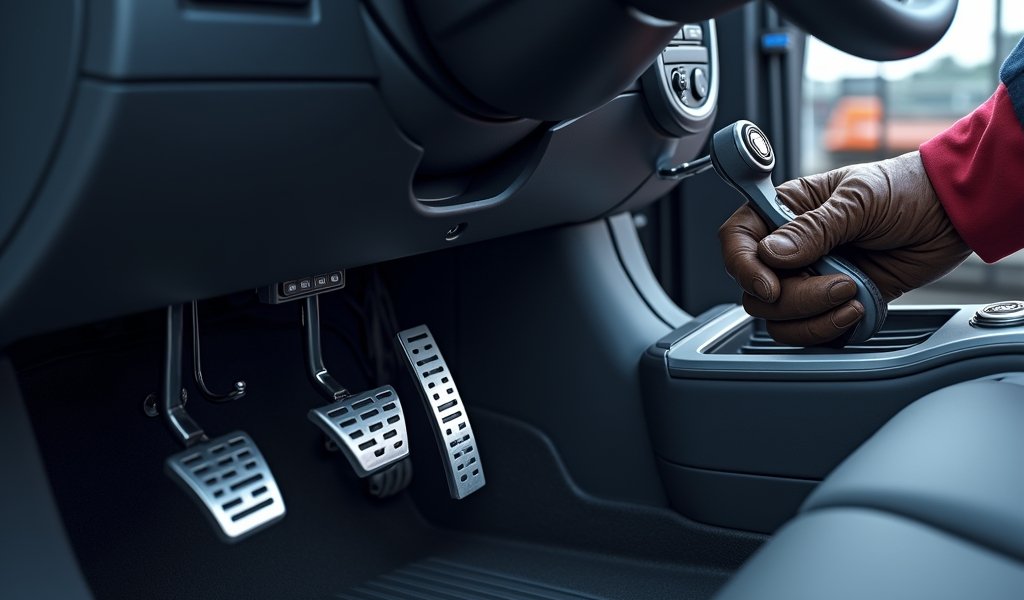Overview
This article provides five essential tips for proper clutch pedal adjustment in manual transmission vehicles, covering how to recognize adjustment needs, understand different clutch systems, measure free play correctly, test after adjustments, and document the process. Proper clutch adjustment ensures smooth gear transitions, optimal vehicle performance, and extended clutch lifespan by maintaining the correct amount of free play—typically 0.5-1 inch of initial pedal movement before resistance.
Table of Contents
- Understanding Clutch Pedal Adjustment
- Why Proper Clutch Adjustment Matters
- Signs Your Clutch Needs Adjustment
- Tools You’ll Need
- The 5 Essential Tips for Clutch Pedal Adjustment
- Common Mistakes to Avoid
- Maintenance After Adjustment
- Conclusion
- Frequently Asked Questions
Understanding Clutch Pedal Adjustment
The clutch pedal adjustment procedure is something every manual transmission owner should understand. Think of your clutch as the mediator between your engine and transmission – when it’s properly adjusted, you’ll enjoy smooth gear transitions and optimal vehicle performance. When it’s not, you might experience everything from difficult shifting to premature clutch wear.
I’ve been working on manual transmissions for over 15 years, and one thing I’ve learned is that a properly adjusted clutch can make all the difference in how your car drives. The good news? You don’t need to be a seasoned mechanic to handle basic clutch adjustments. With the right guidance, this is something many car owners can tackle in their own garage.
In this comprehensive guide, I’ll walk you through everything you need to know about clutch pedal adjustment – from recognizing when it’s needed to executing the procedure with confidence. We’ll focus on 5 essential tips that make the process straightforward, even if you’re relatively new to DIY car maintenance.
Why Proper Clutch Adjustment Matters
Before diving into the how-to, let’s understand why clutch adjustment matters. A properly adjusted clutch provides the correct amount of free play – that initial movement of the pedal before you feel resistance. This free play is crucial because it ensures the clutch fully engages and disengages when needed.
Too little free play means your clutch might not fully engage, causing it to slip during acceleration. This slipping creates friction and heat, dramatically reducing clutch lifespan and potentially leading to expensive repairs. Trust me, replacing a clutch is significantly more involved than adjusting one!
On the flip side, excessive free play can make it difficult to disengage the clutch completely, leading to grinding gears and challenging gear shifts. This not only makes driving less enjoyable but can damage your transmission over time. The sweet spot of proper adjustment gives you smooth shifting, better fuel economy, and longer component life.

Signs Your Clutch Needs Adjustment
Your car usually doesn’t keep secrets when the clutch needs attention. Here are the telltale signs that it’s time for a clutch pedal adjustment:
- High pedal engagement point (the clutch engages only when the pedal is near the top of its travel)
- Low pedal engagement point (you have to press the pedal almost to the floor before anything happens)
- Difficulty shifting gears, especially when the engine is cold
- Grinding noises when shifting
- The clutch slips under acceleration (engine RPM increases but vehicle speed doesn’t match)
- Inconsistent clutch feel or engagement point
If you’re experiencing any of these symptoms, don’t wait too long to address them. What starts as a minor adjustment issue can progress to more serious problems if left unchecked. The good news is that catching these signs early often means a simple adjustment will resolve the problem.
I remember working on a Toyota Corolla that had developed increasingly difficult shifting. The owner assumed they needed a new transmission service, but it turned out a 15-minute clutch adjustment was all that was needed. The look of relief on their face when I told them the bill was a fraction of what they’d expected? That never gets old.
Tools You’ll Need
One of the beauties of clutch adjustment is that it typically doesn’t require specialized equipment. For most vehicles, you’ll need:
- Basic wrench set (combination wrenches work well)
- Pliers or needle-nose pliers
- Flashlight (a headlamp is ideal since it keeps your hands free)
- Measuring tape or ruler
- Safety glasses
- Gloves (mechanics gloves provide good grip while protecting your hands)
- Jack and jack stands (for vehicles requiring under-car access)
- Vehicle-specific service manual (highly recommended)
Before starting, it’s worth checking if your vehicle has a self-adjusting clutch. Many modern cars have eliminated manual adjustment points, instead using hydraulic or self-adjusting mechanisms. Your owner’s manual should indicate this, or you can check a reliable repair database like AllData DIY.
Having the right tools ready before you start makes the job much smoother. Nothing disrupts workflow like having to stop mid-procedure to hunt down a tool you didn’t realize you’d need!
The 5 Essential Tips for Clutch Pedal Adjustment
Let’s dive into the heart of the matter with these five essential tips that will help you perform a clutch pedal adjustment like a pro:
1. Understand Your Vehicle’s Specific Clutch System
Not all clutch systems are created equal. Broadly speaking, you’ll encounter two main types: cable-operated and hydraulic clutches.
Cable-operated clutches use a physical cable that runs from the pedal to the clutch fork. These are generally simpler to adjust, often involving a threaded adjuster on the cable itself. You’ll typically find these on older vehicles and some smaller, economical cars.
Hydraulic clutches use fluid pressure to transmit force from the pedal to the clutch. These systems might have an external slave cylinder adjustment or may require bleeding to remove air if they’re not performing correctly. Many newer vehicles use hydraulic systems because they provide a more consistent pedal feel.
Before making any adjustments, identify which system your car has and locate the adjustment points. Your vehicle’s service manual is invaluable here – it will specify the exact location and adjustment procedure for your particular model.
2. Master the Correct Adjustment Procedure
For cable-operated clutches:
- Locate the clutch cable adjusting nut, usually found near where the cable connects to the clutch pedal or at the transmission end
- Loosen the locknut that keeps the adjustment nut in place
- Turn the adjustment nut to increase or decrease free play (typically clockwise tightens the cable, reducing free play)
- Aim for the manufacturer-specified free play (usually between 1/2 to 1 inch of initial pedal movement)
- Once properly adjusted, tighten the locknut while holding the adjustment nut in position
For hydraulic clutches with adjustment capability:
- Locate the pushrod at the clutch master cylinder or slave cylinder
- Measure the current free play
- Adjust the pushrod length by loosening the locknut and turning the rod (in most cases)
- Tighten the locknut after achieving the manufacturer’s specified clearance
- Check that the pedal height and free play meet specifications
Remember, adjustments should be made in small increments, with testing between each adjustment. This prevents over-adjustment, which can create new problems.
3. Ensure Proper Free Play Measurement
Measuring free play correctly is crucial for a successful adjustment. Here’s the proper technique:
- With the engine off, slowly depress the clutch pedal with your hand
- Pay attention to the initial movement before you feel resistance
- This initial movement is your free play
- Measure this distance – it should match your vehicle’s specifications (typically 0.5-1 inch or 12-25mm)
Too little free play means your clutch might not fully engage, causing it to slip and wear prematurely. Too much free play can make shifting difficult and may prevent the clutch from fully disengaging. Getting this measurement right is the key to a proper adjustment.
If you’re unsure about the specifications for your vehicle, consulting the clutch replacement guide for your specific model can provide valuable insights into the correct measurements.
4. Test After Each Adjustment
The adjustment process should be iterative. After each adjustment:
- Start the engine and press the clutch pedal fully
- Attempt to engage first gear – it should slip in smoothly without grinding
- Slowly release the clutch while applying slight throttle
- The car should start moving smoothly without juddering or stalling
- Test shifting through different gears
If any issues persist, make additional small adjustments and test again. The goal is to find the sweet spot where the clutch engages smoothly and at the right point in the pedal travel.
Sometimes it takes a few tries to get it just right, so be patient. The extra time spent fine-tuning the adjustment will pay off with smoother driving and longer clutch life.
5. Document Your Process and Results
This may seem trivial, but documenting your procedure is invaluable, especially for DIY mechanics. I suggest:
- Take “before” pictures or measurements of the adjustment points
- Note how many turns or millimeters of adjustment you make
- Record the date of adjustment and vehicle mileage
- Note any observations about how the clutch feels before and after
This documentation serves two purposes. First, it gives you a reference point for future adjustments. Second, it helps you track how frequently your clutch needs adjustment, which can indicate whether there might be underlying issues that need addressing.
I’ve found that keeping a simple maintenance log for each vehicle I work on helps identify patterns that might otherwise go unnoticed. This practice has saved countless diagnostic hours over the years.

Common Mistakes to Avoid
Even experienced mechanics sometimes make these errors, so be on guard against:
- Over-adjusting: Making too large an adjustment in one go can create new problems. Always adjust in small increments.
- Forgetting to secure locknuts: This allows the adjustment to change as you drive, potentially causing damage.
- Ignoring manufacturer specifications: Vehicle designers determined the optimal settings for a reason.
- Working with a hot engine: Allow the engine and transmission to cool before making adjustments to avoid burns.
- Neglecting to check hydraulic fluid: If your vehicle has a hydraulic clutch, low fluid levels can mimic adjustment issues.
I once had a customer who repeatedly adjusted their clutch, making it tighter and tighter because it kept “slipping.” Turns out, they had a worn clutch disc that needed replacement, not adjustment. No amount of cable tightening would fix the underlying problem. The lesson? Sometimes adjustment isn’t the answer, and forcing it can make things worse.
When in doubt, consult with a professional. A quick conversation with a certified mechanic might save you hours of frustration and prevent potential damage.
Maintenance After Adjustment
Once you’ve completed the clutch pedal adjustment procedure, there are a few maintenance practices that will help ensure long-term performance:
- Monitor pedal feel over the next few weeks to ensure the adjustment holds
- For hydraulic clutches, check fluid levels regularly and top up if necessary
- Inspect the clutch cable for fraying or damage if you have a cable-operated system
- Consider lubricating clutch pedal pivot points with a silicone-based lubricant
- Pay attention to how the clutch engages during different driving conditions
Most clutches will need occasional adjustment throughout their lifespan. How often depends on your driving style, the vehicle, and the type of clutch system. A good rule of thumb is to check adjustment whenever you notice changes in clutch feel or during regular maintenance intervals.
Remember that driving habits significantly impact clutch longevity. Avoid “riding” the clutch (keeping it partially engaged), and try not to hold the car on hills using just the clutch. These habits create unnecessary wear that no amount of adjustment can compensate for.
Conclusion
Mastering the clutch pedal adjustment procedure is one of those satisfying skills that pays dividends in vehicle performance and longevity. By following these five essential tips, you can approach this maintenance task with confidence, whether you’re a seasoned DIY mechanic or relatively new to working on your vehicle.
Remember that proper clutch adjustment is about finding that sweet spot where engagement is smooth, shifting is effortless, and wear is minimized. Take your time, make incremental adjustments, and test thoroughly after each change.
While most clutch adjustments are straightforward, don’t hesitate to seek professional help if you encounter unusual symptoms or if the adjustment doesn’t resolve your issues. Sometimes what seems like an adjustment problem could be a sign of more significant wear or damage that requires professional attention.
What clutch adjustment experiences have you had? Did you find it easier or more challenging than expected? I’d love to hear about your experiences in the comments below. And if you found this guide helpful, consider sharing it with other manual transmission enthusiasts who might benefit from these tips!
Ready to tackle your clutch adjustment? Grab your tools, set aside an hour or so in the garage, and give your car the attention it deserves. Your transmission will thank you with smoother shifts and improved performance for miles to come.
Frequently Asked Questions
How do I know if my clutch is self-adjusting?
Check your vehicle’s service manual or look for adjustment mechanisms on the clutch pedal assembly or cable. Self-adjusting clutches typically lack external adjustment points and are common in newer vehicles.
How much free play should a clutch pedal have?
Most vehicles require between 1/2 to 1 inch (12-25mm) of free play. Always refer to your specific vehicle’s service manual for the exact specification.
Can I adjust my hydraulic clutch?
Some hydraulic clutches have external adjustment points at the master or slave cylinder. Others are self-adjusting and may need bleeding rather than mechanical adjustment if not performing correctly.
How often should I adjust my clutch?
Adjust your clutch whenever you notice changes in pedal feel or shifting quality. For most vehicles, this might be every 20,000-30,000 miles, but driving habits and vehicle design can significantly affect this interval.
What happens if I don’t adjust my clutch properly?
Improper adjustment can lead to premature clutch wear, difficult shifting, and potential damage to the transmission. Too little free play causes slipping, while too much can prevent proper disengagement.


Pingback: Clutch Hydraulic System Bleeding: 5 Tips - knowsyourcar.com
Pingback: pressure plate diaphragm spring overhaul - knowsyourcar.com